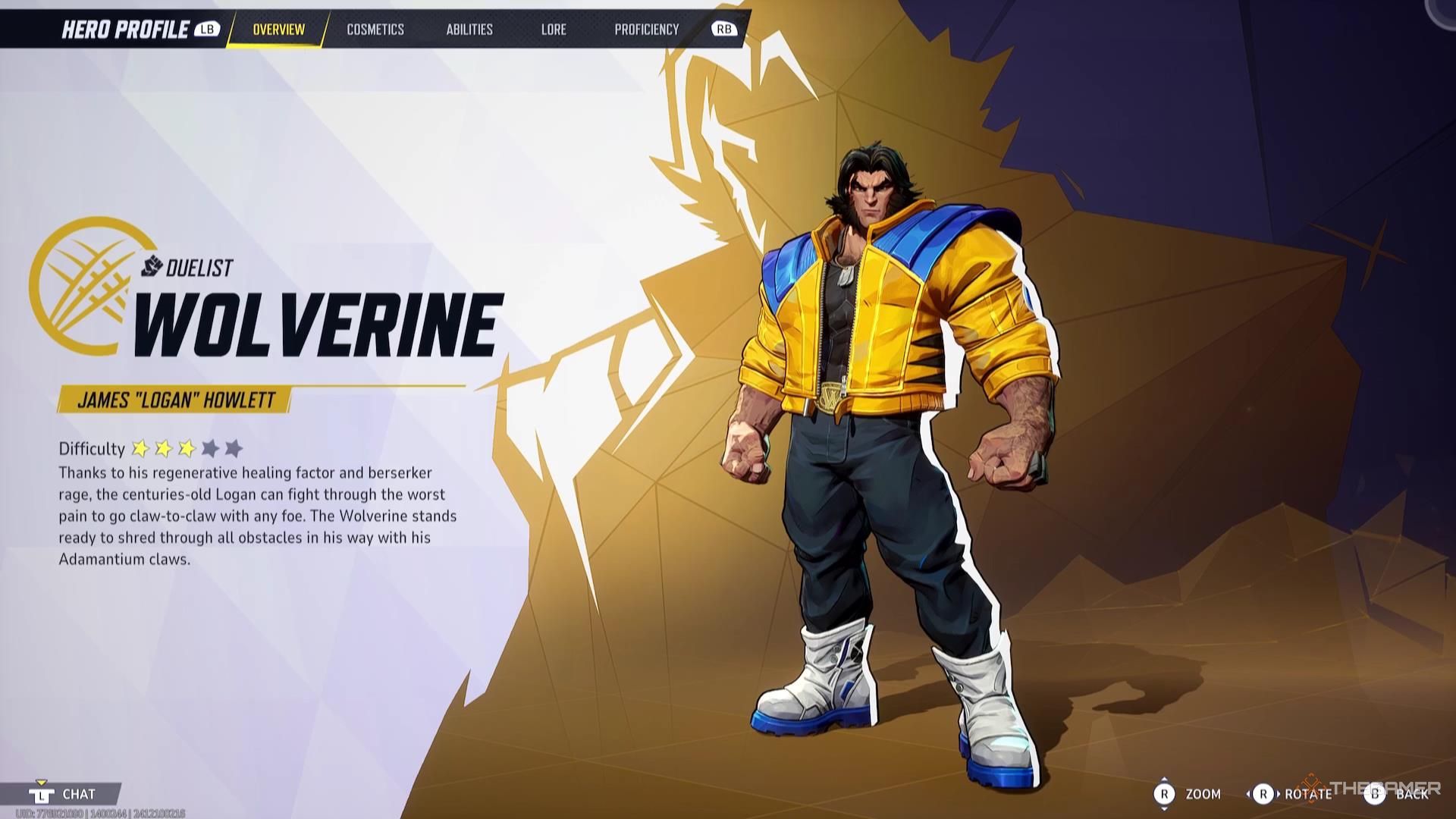Few characters in Marvel Rivals fill as unique a role as Wolverine. He is classified as a Duelist, and primarily, that’s what he is. But at the same time, he’s oftentimes capable of tanking twice the damage of other Duelists and taking quite a lot of attention from the enemy team.
While he’s certainly capable of dealing heavy amounts of damage, he almost fits into a dual-role between Vanguard and Duelist, keeping his allies fighting from range safe, while he proves why he’s the best at what he does up close. But because of this, he can be very difficult to play, particularly if you aren’t familiar with him.
Wolverine Overview
Wolverine is a great harasser; a character that can come in seemingly out of nowhere, focus fire on an enemy behind their own front lines, and drop them before their team is able to really fight back. Ideally, Wolverine uses his movement abilities to get in from a flanking route, and then back out, preferably towards a healing pad.
The downside to this is be that, once you’ve done this a few times, the enemy team starts to prepare for it better and better. If you keep using the same tactic, they’re going to focus fire you the moment you show up, and Wolverine’s 300HP isn’t going to be enough to keep him on his feet.
Close coordination between Vanguard and Wolverine can help give both of them more success.
|
Strengths |
Weaknesses |
|---|---|
|
|
Berserker Rage
One of Wolverine’s passives, Berserker Rage, enables him to build up rage for every attack he dishes out, and every attack he takes. This meter is going to fill up extremely quickly in a close-range situation, and it’s in your best interest to keep it as high as you can.
The higher his rage, the more damage his primary attack is going to do, and the better his Healing Factor, which we’ll get into a little later, is going to function.
Basically, if you’re going to get the most out of Wolverine, this bar needs to stay as high as it can. When it’s high, he can be one of the most effective Duelists out there. When it’s low, he’s going to be one of the least effective.
Savage Claw
Savage Claw is Wolverine’s primary attack, and what you’re going to be doing the bulk of your damage with. It’s exactly what you expect; Wolverine uses his claws to attack an enemy in melee range.
Savage Claw is going to increase Wolverine’s rage, and Wolverine’s rage is going to increase the damage of Savage Claw. But, Berserker Rage isn’t the only ability of Wolverine’s that interacts with Savage Claw.
Feral Leap
Feral Leap allows Wolverine to leap a pretty hefty distance, and any enemy that he comes into contact with along the way is going to ride his claws until they land. This is a very multi-faceted ability, and can be used for a wide variety of reasons.
The other effect of Feral Leap is that it enhances Savage Claws, Wolverine’s primary attack. That attack is going to be much faster, and significantly improve his damage output.
When To Use Savage Leap
Savage Leap has a lot of use cases. Ideally, it’s going to be used offensively. It’s a great way to split an enemy off from the rest of their group, allowing you to create a 1v1 situation where you’ve got the upper hand immediately.
You can do this to remove a Vanguard from their Strategist, you can ambush a Duelist from behind and take them out of cover; you could even take someone with you off the edge of the map. It’s an ability that rewards creativity.
You can also use this ability as an escape method. As mentioned before, Wolverine does not have enough health to stay the center of attention for very long. Getting out of a bad situation and into some healing is going to dramatically increase your alive-time with Wolverine, and this ability is the easiest way to get out of certain death.
Vicious Rampage
Vicious Rampage is Wolverine’s other hybrid movement/attack ability, and this is one you can use much more often than Feral Leap. Vicious Rampage allows Wolverine to dash forward, closing a small gap quickly and dealing damage to the enemy he hits with it.
When To Use Vicious Rampage
The damage effect this provides is extremely minimal. For the most part, this is meant to help Wolverine, who’s an entirely melee Duelist, close a gap and be able to actually damage his target.
The cooldown on this ability is about four seconds, making it a great way to get in and get out of a fight quickly. Wolverine excels at ambush-style tactics, and this is going to be a bread-and-butter move in that kind of situation.
Undying Animal
Undying Animal is going to reduce the damage Wolverine receives for a short time. This effect only lasts a few seconds, so timing it well is going to be the difference between life and death.
When To Use Undying Animal
For the most part, you want to use Undying Animal the instant you’re about to start taking heavy damage. Using it too early is going to be a waste; to get the most out of it, it should be used directly before you make your ambush.
What Undying Animal is not going to do is keep you alive when you’re already getting pounded with damage. The effect isn’t dramatic enough to provide you anything resembling invincibility. Think of it more like increasing the odds that you survive a fight, instead of an ability you’re meant to activate during it.
Regenerative Healing Factor
Regenerative Healing Factor is Wolverine’s second passive ability, and allows him to gain a chunk of bonus health when his health gets low. After a few seconds, this bonus health becomes real health, healing for the same amount, but consuming all of his rage.
Without this, Wolverine would not be nearly as effective, particularly when the enemy team collapses on him during an ambush. This isn’t usually enough health to keep him in a fight for much longer, but it can give him the chance to escape, or help him win a 1v1 situation.
Last Stand
Wolverine’s ultimate ability is Last Stand, and acts similarly to Feral Leap. This launches Wolverine into the air first, taking nearby enemies with him. After, he can launch in a chosen direction, dealing damage to anybody he either takes with him, or lands on.
When To Use Last Stand
You don’t want to use Last Stand when there’s a chance that you could die before it fully goes off. For the most part, you’ll want to use this as an opener in an engagement, right as you begin a fresh ambush.
Last Stand is going to be more effective the more rage you have built up; this gives it a smaller window of peak effectiveness. For the best results, it should be used between ambushes, while you still have some rage built up from the last attack.
Fastball Special
Fastball Special is Wolverine’s Team-Up ability with The Hulk. If both players decide to, Hulk can pick up and throw Wolverine in a direction.
This goes even further to cement Wolverine as being a bit of both Duelist and Vanguard. Together, Hulk and Wolverine can harass the enemy team, with Hulk throwing Wolverine just behind enemy lines as Hulk charges into the center.
Fastball Special can essentially save Wolverine a Feral Leap. This allows him to launch into a group in a similar way, without starting that long, thirteen second cooldown.
























Leave a Reply